Greatest Hitter
Baseball has had a treasure trove of outstanding batsmen for whom the public hoisted highest admiration. And its youth have persisted in trying to emulate these idols for decades, with aspirations to further their own glory. But the mechanical advantage that propels an amateur into the professional ranks is not easily discernable to the ignorant or naïve eyes of youngsters.
It is easy to appreciate any and all of those professional baseball players whose artistic preponderance have negotiated the ladder of masterful bats-man-ship to a verifiable degree. But the only way to describe the best of batters is that “he makes excellence look simple.” Although it was not really simple, abiding by a strict discipline of simple mechanics, he has perfected his technique through arduous, repetitive labor, from which the human physical endeavor appears effortless and instinctive.
“Batting” is an individual sport-skill that encompasses a variety of challenging variables. A batter has to “put in order” all of them to be a proficient “hitter.” It takes physical strength, flexibility, quickness, and timing, as well as the mental attributes of courage, confidence, determination, fortitude, for even the least skilled professional to “stand-in” against a 95 M.P.H. fastball, or 85+ slider, plus the myriad of off-speed pitches.
Ted Williams was nearly perfect in his understanding and application of the principles governing the absolute definition of batting prominence, but he was not altogether unflawed in his actual approach to an impeccable demonstration. The closest batter to mechanical perfection was Barry Bonds.
The only thing difficult to decipher about Barry was whether or not he was conscious of his pre-eminent status as a pure extrapolation of principle, or was he subject to faltering, due to lack of understanding? His strength was incontestable (after Mark McGwire had retired), his athletic ability was indisputable, his timing was nearly impeccable, and his stance, approach to the ball, and fluid mechanics were incomparable. His only slight deficiency seemed to be in the realm of the mental accountability, which manifested itself physically at times of uncharacteristic, momentary slumps, as well as in questionable decisions to enhance his prowess.
As the pitch was delivered his front foot strode forward, ever so slightly so as to maintain maximum visual acuity. His body gradually leaned over and down so he could maximized his perspective on a ball that he intuitively knew was traveling in a descending line or arc. With his front shoulder down and in, and his back elbow up, he waited until the last possible instant, (while his hands rhythmically lowered his bat slightly below his waist and backward), then pushed down, hard, on his front foot, from which began the strong and rapid straightening of the front leg. This action initiated the quick and powerful turning of the front hip backwards, which occurred simultaneously as his back bent knee and hip powered forwardly. At the same time that the lower body was administering its function, the right shoulder was instigating the preliminary movement to initiate the swinging of the bat.
After the front foot-plant, the front shoulder, at its precise cue, “shrugs” upward, securing the shoulder girdle while maintaining “a head and eyes” that are completely still, focusing on the ball. The “shrug” creates the opportunity for the back shoulder to follow its natural downward thrust to initiate the action of the back elbow to drive forward. At this point, the hands have locked the wrists into place, from their previous swaggering momentum, and the entire body continues on its course, with the arms and flattened bat trailing in a slightly upward direction to meet the ball at an angle of close to 180 degrees. The consistency of his bat meeting the ball at close to 180 degrees accounts for the fact that most of his Home Runs were carried on a trajectory of a high “line-drive.” The “Art” of hitting a baseball certainly could be defined in the context of describing the ideal hitter– “He is one whose bat most consistently contacts the ball in a manner that facilitates a straight and ascending “line-drive.”(To hit the ball in any other manner would be to miss-hit it.)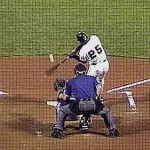
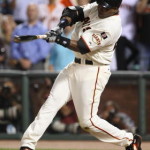



Is there anyone smart enough to figure out how to duplicate his technique?
The three major components in effecting the proper technique for batting a baseball are these: balance, vision, and power. As the pitcher throws the ball, the batter’s strong balanced position allows his eyes to focus on the point where the ball is being released. Preliminary movement implies that his body is “gathering” itself to brace for any number of possible conditions. The body maintains a low center of gravity to ensure stability, while shifting its weight slightly inward (not back) to initiate a quick twisting response to the ball as it presumably enters the “zone.” The quick twisting response is effected by a rapid sequence of fluid rotary movements simultaneously by the entire turning body, beneath the stationary head. If balance and focus are maintained from start to finish, the power and effectiveness will be evident in the beauty of the “follow-through.” A batter establishes stability and balance to perform his task when his center of gravity is low. His ability to see the ball most clearly is determined by the extent to which his eyes are on a parallel level to the ball, and the degree to which the body and head maintain a stable vehicle for proper focus. Power is generated most effectively with the body in a stable, balanced position, from which all movements can be produced most speedily, and with a minimum strain to accompanying body parts. The centripetal force provided by the stable position of the vertical axis produces the powerful centrifugal force, which magnifies the power elicited by the turning hips and shoulders.
The rules are simple and orderly. To abide by them and commit them to proper interpretation are what seem to be difficult, especially to those who prefer to act on their own fallible human instincts instead of a sound basic principle. A prominent 19th century philosopher makes this statement for our consideration, “The higher false knowledge builds on the basis of evidence obtained from the physical senses, the more confusion ensues and the more certain is the downfall of its structure.” Therefore, make it SIMPLE — by letting Principle speak for itself!
The scientifically minded “artist-of-the-bat” should understand and adhere strictly to the rules of his mental-physical application, and rest his performance on this sure foundation. He should hold his thought perpetually to the idea that his natural talent and indisputable scientific certainty can and will evoke from Principle the rule for mastering the most difficult task in all of sports.
Coming Soon: Einstein and the Home-Run Principle (Maximum Success without Steroids)
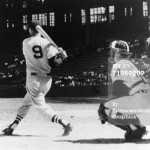
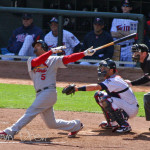
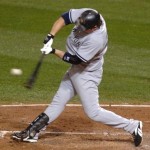

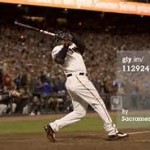
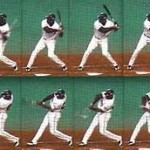

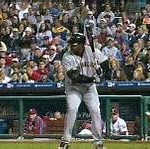

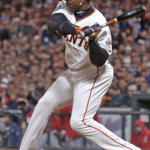
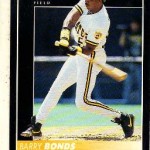
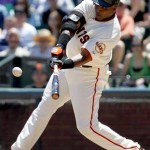
Thanks, this site is very valuable.
http://test2.com